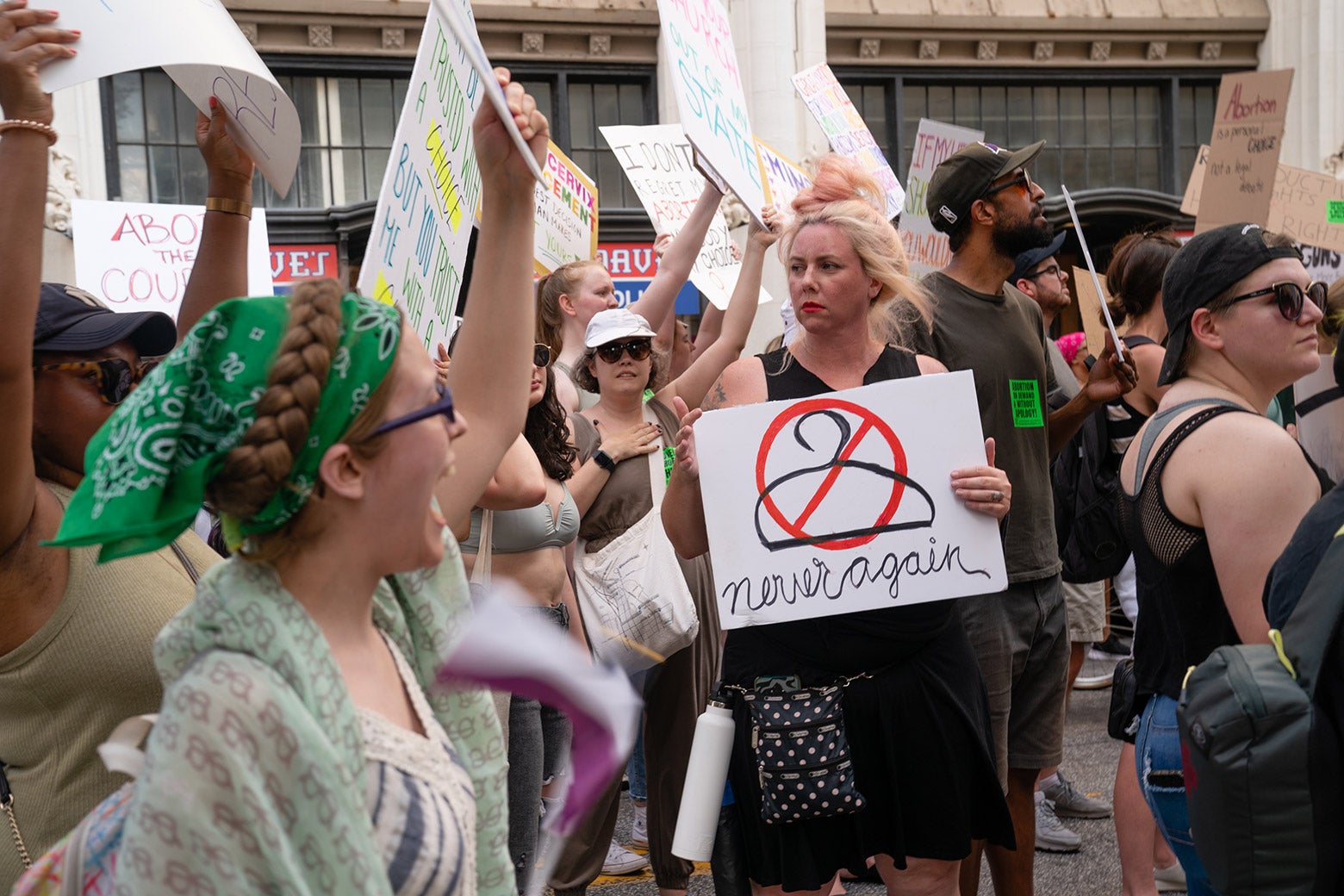Number Six
I like big bots and I can not lie

The Deaths of Two Mothers in Georgia Show That Ending Roe Was Never About “Life”
To read Candi Miller’s or Amber Thurman’s story is to realize how little has changed.
This week, ProPublica released two studies tracing the deaths of two women to Georgia’s six-week abortion ban—the first to be reported since the reversal of Roe v. Wade. Twenty-eight-year-old Amber Thurman took abortion pills but did not completely expel the fetal tissue from her body. She developed a serious infection and went to the hospital, where physicians would ordinarily have performed a dilation and curettage to remove the remaining tissue. In Thurman’s case, however, physicians failed to act for roughly 20 hours. They waited to operate until the situation was dire, and Thurman died.
Candi Miller, a mother of three, suffered from lupus, diabetes, and hypertension, and she was warned that her health was so fragile that she might not survive another pregnancy. When she accidentally became pregnant again, she ordered abortion pills online. Like Thurman, Miller didn’t entirely expel the fetal tissue and developed a serious infection. But Miller did not seek out care. Her family reported that she was aware of Georgia’s criminal abortion law and afraid of what would happen if she sought emergency care. Her husband found her unresponsive in bed, her 3-year-old daughter at her side.
A state medical committee subsequently concluded that Miller’s and Thurman’s deaths had been preventable. And at least in Miller’s case, the committee drew a causal connection between Miller’s death and the state’s abortion ban.
Stories about physicians’ reluctance to provide emergency care to pregnant patients have become common since the Supreme Court reversed Roe v. Wade, both in the media and in court. Perhaps more wrenching still, we have expected to see deaths like Thurman’s and Miller’s, based on what we know about the long history of abortion’s criminalization.
Abortion opponents have already argued that physicians could have legally intervened to save both Miller and Thurman. They might be right. But history makes clear that criminal laws create harm not only because they are too narrow or confusing or contradictory. Criminalization also causes harm because it generates fear, for physicians and patients, and that fear often has more to do with the fate of patients than with what any law actually says.
Reading the details reported by ProPublica is especially heartbreaking for anyone who has studied the history of abortion in America. For much of the nation’s past, most historians understand, abortion was permitted until quickening, the point at which a woman could detect fetal movement. The American Medical Association led a crusade to criminalize abortion in the latter half of the 19th century. Most of these criminal laws included an exception for the life of the patient, and state courts often afforded physicians (but not other providers) discretion when they acted in good faith to protect their patients’ lives and even health. There is considerable evidence that criminal laws didn’t stop abortions in the late 19th century; indeed, the number of procedures seems to have increased. The abortion rate rose again during the Great Depression.
